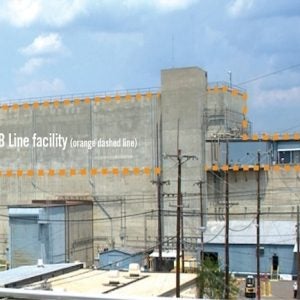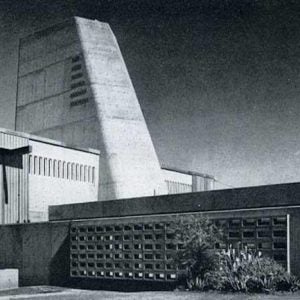
These issues were discussed during a working visit to Beloyarsk NPP on 8 July by Alexander Shutikov, Deputy General Director for NPP Operation at nuclear utility Rosenergoatom. The meeting also considered key tasks of repairing power units 3 and 4; preparations for extending the life of unit 3; transferring the BN-800 reactor core at unit 4 to a full load of mixed oxide (mox) fuel; supplying equipment for the next few years; and preparatory measures for the construction a BN-1200 fast reactor at unit 5.
“Our main daily task is to improve the quality of the organisation of operation,” said Shutikov. “The main thing in the constant improvement of the quality of operation is the real leadership of managers, each at his own level, from the management of nuclear power plants to foremen.”
Meanwhile, specialists at Russia’s AA Bochvar Research Institute of Inorganic Materials (VNIINM, part of Rosatom’s TVEL fuel company) have developed unique irradiation assemblies for testing mixed uranium-plutonium nitride (MNUP) fuel at Beloyarsk NPP. VNIINM developed and organised the manufacture at the Siberian Chemical Combine (SCC) in Seversk of irradiation assemblies with removable containers for testing in the BN-600 reactor. The project was also supported by the designers at Afrikantov OKBM and the AI Leipunsky Institute of Physics and Power Engineering (IPPE) in Obninsk. This design will make it possible to test fuel elements with MNUP fuel up to the maximum design parameters – to perform reactor tests, study microprocesses in the fuel composition and conduct fuel licensing. The removable containers hold ampoules with fuel rods with shells made of austenitic chromium-nickel steel (BN type fast reactors) and ferritic-martensitic steel (BREST type fast reactors).
“The new irradiation assemblies will make it possible to obtain data on the behaviour of samples of promising structural materials, as well as the MNUP of fuel incorporated in the designs of both BN and BREST type fast reactors. The experiments are aimed at increasing the burnup of nitride fuel,” said Mikhail Skupov, Deputy General Director, Director of the Research and Design and Technology Department for the Development of Fuel Rods for Fast and Gas Reactors at VNIINM.
Earlier VNIINM specialists developed a technical design for a fuel element for fuel for the BREST-OD-300 lead cooled fast reactor. The project will form the basis for the industrial production of MNUP fuel, which will be launched as part of the Experimental Demonstration Energy Complex (ODEK), which is being built at SCC as part of the Breakthrough strategic industry project to demonstrate a closed fuel cycle.
In parallel, work continues in TVEL on the creation of second-generation fuel elements for the BREST-OD-300 with a higher burnup level, which should be used when the production of MNUP fuel moves from fabrication to the refabrication stage: that is, processed fuel will be used in the manufacture of fresh fuel at ODEK.
The Beloyarsk nuclear plant started operation in 1964. Units 1 and 2 – AMB-100 and AMB-200 thermal neutron reactors – have been closed for decommissioning. Beloyarsk 3, with a BN-600 fast neutron reactor began operation in 1980 and Beloyarsk 4 with a BN-800 fast reactor started up in 2015.
Image: Beloyarsk NPP (photo courtesy of Rosenergoatom)






